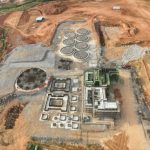Canadian mining firm First Quantum Minerals is evaluating a gold pre-payment or streaming deal tied to its Zambian operations as a way to strengthen its balance sheet, Chief Financial Officer Ryan MacWilliam told analysts on Thursday.
The move comes as the company seeks alternative funding avenues beyond a minority stake sale in its Zambian assets.
Last year, First Quantum had explored selling a minority interest in its Kansanshi and Sentinel mines in Zambia.
While that option remains under consideration, the company is now actively exploring gold streaming arrangements, particularly from the Kansanshi mine.
“We’ve seen record-high gold prices, which make the pre-payment and streaming markets quite robust,” MacWilliam said during a call on the company’s quarterly earnings. “It gives us a variety of financing options beyond those previously discussed.”
Gold streaming is a financing model where a company receives upfront capital in exchange for future gold production at a predetermined price, often below market value.
Shares of First Quantum were up 1% on the Toronto Stock Exchange following the announcement.
The Zambian mines have become increasingly important to First Quantum following the 2023 shutdown of its Cobre Panama copper mine.
That closure, triggered by a ruling from Panama’s Supreme Court after widespread environmental protests, significantly impacted the company’s production capacity and financial outlook.
Although the mine remains closed, First Quantum is in ongoing discussions with Panamanian officials to resolve the situation.
In June, President Jose Mulino approved the export of copper concentrate stockpiled prior to the shutdown, marking a small step forward in the impasse.
The company is currently spending about $15 million per month on care and maintenance at Cobre Panama, a figure projected to rise to between $17 million and $18 million later this year.
According to RBC Capital Markets, First Quantum ended the second quarter of 2025 with $745 million in cash and $6.2 billion in debt, slightly improved from $751 million in cash and $6.5 billion in debt at the end of Q1.















